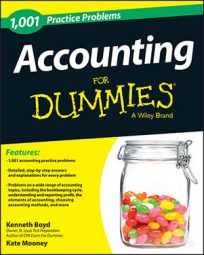You can determine how much cash is generated from a company's operating activities based on its net income, depreciation expense, and accounts receivable and payable. The following questions ask you to calculate cash from operating expenses in two different scenarios.
Practice questions
-
During a year, a company reports a net income of $155,000, a depreciation expense of $35,000, an accounts receivable increase of $25,000, and an accounts payable increase of $10,000. How much was cash provided by operating activities (assuming no other changes occurred in current operating accounts)?
-
During a year, a company reports a net income of $80,000, a depreciation expense of $5,000, an amortization expense of $2,000, and an accounts receivable decrease of $3,000. In addition, the company sold bonds for $400,000 cash. How much was cash provided by operating activities (assuming no other changes occurred in current operating accounts)?
Answers and explanations
-
$175,000
Depreciation expenses must be added back to net income to determine cash from operating activities. Also, the increase in accounts receivable must be deducted, and the increase in accounts payable must be added to net income to determine cash from operating activities. Therefore, net income of $155,000 plus the depreciation expense of $35,000 less the increase in accounts receivable of $25,000 plus the increase in accounts payable of $10,000 equals cash provided by operating activities of $175,000.
-
$90,000
Both the depreciation expense and amortization expense must be added back to net income to determine cash from operating activities. Also, the decrease in accounts receivable must be added to net income to determine cash from operating activities. Therefore, net income of $80,000 plus depreciation expense of $5,000 plus amortization expense of $2,000 plus accounts receivable decrease of $3,000 equals cash provided by operating activities of $90,000. The proceeds from the sale of bonds are in the financing section and aren't operating activities.
If you need more practice on this and other topics from your accounting course, visit Dummies.com to purchase Accounting For Dummies! Featuring the latest information on accounting methods and standards, the information in Accounting For Dummies is valuable for anyone studying or working in the fields of accounting or finance.

